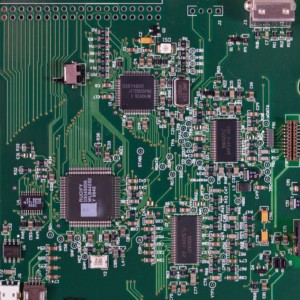3 areas of facility cleaning services you can ‘digitise’ for sustainability
Innovations in digitisation, automation and data analytics, are radically changing the way buildings are being operated.
Anything that has a power source can have a sensor attached to it now, enabling it to compile and analyse information. Business software, personal tracking devices, smart metres, building sensors and digital components embedded in equipment, are producing an unprecedented volume of data that is often referred to as ‘Big Data’.
So I have 3 questions and answers for you:
- Will this mountain of data affect the way cleaning services and supplies are procured in the future? Undoubtedly.
- Can it be used to make the cleaning industry more sustainable? Absolutely.
- And what can you do to stay ahead in this brave new digital world? Read on to discover three areas of facility cleaning that you need to ‘digitise’ for better sustainability…

Area 1 – Digital assets
In a Facility Management conference that I attended recently, speaker after speaker left the audience feeling slightly overwhelmed as they described the rapid digitisation of buildings and the equipment used to operate them.
No longer are Building Management Systems (BIMS) restricted to new buildings in the heart of the CBD. Any building can now be digitised and the underlying cause of this so-called ‘digital disruption’, is a huge fall in price of electronic sensors – from $500 a few years ago to as little as $15 today.
Digital sensors can be programmed to collect data and to control the systems that operate buildings, improving efficiency and occupant comfort, while reducing time and energy costs. Common examples of this are the sensors that measure light levels and movement and automatically switch on lights as needed.
More specialised sensors can monitor temperature, humidity, CO2 levels and air flow, in real time, then feed this data into a centralised system that controls the heating, ventilation and air-conditioning (HVAC) system.
While the set-up costs may be high, this degree of automation – called a ‘smart building system’ – can pay for itself surprisingly quickly through better resource management. For example, when the Microsoft headquarters activated their new smart buildings system, within moments the system had found exhaust fans that had been left running for a year, at a cost of $66,000.
Using data to improve energy efficiently and minimise wastage is sustainability 101. But there are other ways sensor data can help make cleaning operations more efficient and sustainable in the process:
- Monitoring dispensers and sending alerts when they need to be refilled (such as soap dispensers) thus preventing premature disposal;
- Activating automatic internal compressors when bins are full – reducing bin-liners, time, transportation and disposal costs.
- Sensors in bins to weigh and report the volume of recyclable waste collected from different premises.
Area 2 – Digitising business operations
There is also enormous potential for Big Data to drive more sustainable and lean cleaning operations. Melbourne’s RMIT University has developed a program that maps each building surface then uses building sensors to continuously track building usage and condition.
This data is fed into a predictive maintenance modelling program that enables informed decision-making for the sustainable management of buildings, and of budget allocations. It’s not a stretch to imagine the day when occupancy sensors, dust particulate readings, or even smart gloss metres, will be used to inform cleaning staff which areas / surfaces to clean on a day-to-day basis.
As sensors and facility management tools become more sophisticated and cheaper / easier to use, the expectation for greater efficiency, transparency, control and flexibility from service operators and their suppliers will follow as it has in other data-driven industries. Smart buildings could see the replacement of fixed schedule contracts with more flexible pricing arrangements that are billed on an as-needs basis.
To stay competitive, most larger cleaning companies have digitised their business processes, including accounting and payroll systems, Customer Relationship Management systems (CRMs), performance monitoring tools, employer tracking devices and induction training records.
However data in of itself, is of no value unless it can be measured against preset goals or benchmarks. I’m yet to see cleaning product or service businesses using the reams of data they capture to analyse, improve and report on the sustainability of their operations.
Here are a couple of simple ideas to get you started:
- Suppliers could provide on-line dashboards, comparing usage patterns across portfolios at different times of year, and integrate this with the results of initiatives to prevent wastage and reduce packaging and transportation.
- Services could overlay their employee tracking systems with the building plans to automatically map workflows and time spent cleaning each building area, then address the inefficiencies and measure savings in time and energy use (such as from lighting or vacuuming).

Area 3 – Digitising people
The final area of digitisation is arguably the most important for achieving sustainable outcomes – the people that use the systems and implement change. Employees with good digital skills will become sought-after. Companies with managers that can analyse smart building metrics, and optimise their service in response, will become invaluable to their clients.
Flexible and efficient scheduling; accurate ordering of consumables to reduce transportation; waste audit reporting; scientific ATP hygiene auditing; installing and interpreting sensors in equipment, trolleys and dispensers to reduce energy use and wastage – the sky is the limit when it comes to the potential for sustainability via digitisation.
However, it will be a very poor investment if the managers lack the skill to interpret the data correctly and to deliver efficiencies.
Companies that are investing in digital systems and training are ‘future-proofing’ their company – but are they future-proofing the environment?
It’s often said that you can’t manage what you don’t measure, but in the world of Big Data, it is even more important to be able to manage what is being measured.
About the Author

Bridget Gardner is Director and Principal Consultant of HPC Solutions (formerly Fresh Green Clean).
This article was originally published in Inclean Magazine, April 2018


